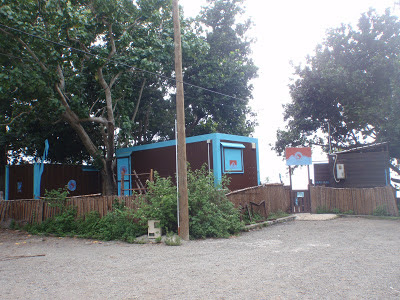Since I became a certified diver I had been looking forward to diving in Mayotte, which has one of the world's largest - and reputedly most beautiful - lagoons (1100km2).
 |
| Lionfish |
This trip to the Mozambique Channel became reality in January 2013. After some initial research we decided to stay in three different locations to make the most of our voyage.
 |
| yellow leaf fish |
Mayotte's lagoon has 12 channels, 160km of barrier reef and an average depth of 40 metres. 254 different species of hard coral have been identified there and its deepest point is 70m.
 |
| S Pass dive sites (courtesy of Reve Bleu) |
First off we started diving with Reve Bleu, based in Mamoudzou, to visit the renowned S Pass, a channel with about 20 or so different dive sites.
 |
| Bat fish |
Needless to say in the time we had available we were only able to dive 5 of those sites: Coude à Jojo 2, Merou Palace, Balcon sur le Bleu, Pointe Barracuda and Canyon Vallée, the latter being a drift dive.
 |
| Titan triggerfish, we saw them on all our Mahoran dives |
One of the first things we noticed was that the coral and plant life was in better health than what we're used to in Réunion.
 |
| Black stingray |
Mayotte is home to two species of turtle: green turtles (the same as those found in Réunion), and hawksbill turtles.
 |
| Hawksbill turtle |
We saw Napoleons on several occasions, and even an enormous Bumphead parrotfish which I'd only ever seen in Indonesia until now.
After several days we headed to the south-west of Mayotte to dive with Abalone Plongée at M'Zouasia beach, near the town of Bouéni.
 |
| Abalone Plongée from the sea |
Abalone is within diving distance of three channels: Boueni pass, Bateaux pass and Sada pass. We dived l'Ancre and the north of Bateaux pass, and Patate à Barracada at Boueni pass. We also dived Lépoé, Oasis and Chamonix in the lagoon.
Backroll!
 |
| Tassled scorpionfish |
Abalone drift dives one of the south-western passes in the morning to see pelagic marine life, and the afternoons are spent diving the coral reefs inside the lagoon.
 |
| some rare red anemone with Yellowtail clownfish |
 |
| juvenile Oriental sweetlips |
This stingray made himself scarce!
 |
| Headshield slug |
Spiny lobster could be found at most dive sites around Mayotte, sometimes living in colonies.
 |
| spiny lobster |
 |
| school of barracuda |
We did a very interesting dive at Lépoé where we only explored the sandy bottom - we saw lots of pipefish, partner gobies, an ejaculating sea cucumber and in particular a demon stinger scorpionfish. Jean-Patrick, our guide, was especially excited as he'd never seen one in 25 years of diving (and neither had we)!
 |
| Demon stinger scorpionfish, also known as 'devil stinger' |
 |
| a non-ejaculating pineapple sea cucumber! |
The third leg of our trip saw us heading up the west coast to Happy Divers at M'liha beach, near the town of M'Tsangamouji.
Here we dived the sites Porite fendu, Mtsangafanou, La Plage and Champs de pavot.
 |
| a shy octopus |
I got the impression we saw more moray eels here in the north-west than at other dive locations.
 |
| the head of a very large moray eel |
This is the only place where we spotted a crown of thorns sea star, although apparently they can be found all around Mayotte.
 |
| a yellow Guineafowl pufferfish |
Returning from one dive our boat was surrounded by friendly dolphins. (Note that, like Réunion, humpback whales can be seen in Mayotte between July and October. And ten days after we'd been diving with them, Abalone plongée saw a manta ray and a hammerhead shark on a dive!)
 |
| dolphins |
 |
| a grey Blackspotted pufferfish |
 |
| lionfish |
While diving in Mayotte we would have loved to have seen a dugong, but as there are only seven of them (and a calf) in the whole lagoon we knew the chances were slim! And although coelacanths are found in the area we were unlikely to see them either, as they are a critically endangered species and live at 100-500m ...
Most of the underwater photos were shot with a Go Pro 2.
Useful links:
For more links about Mayotte see here.
Related posts:







No comments:
Post a Comment